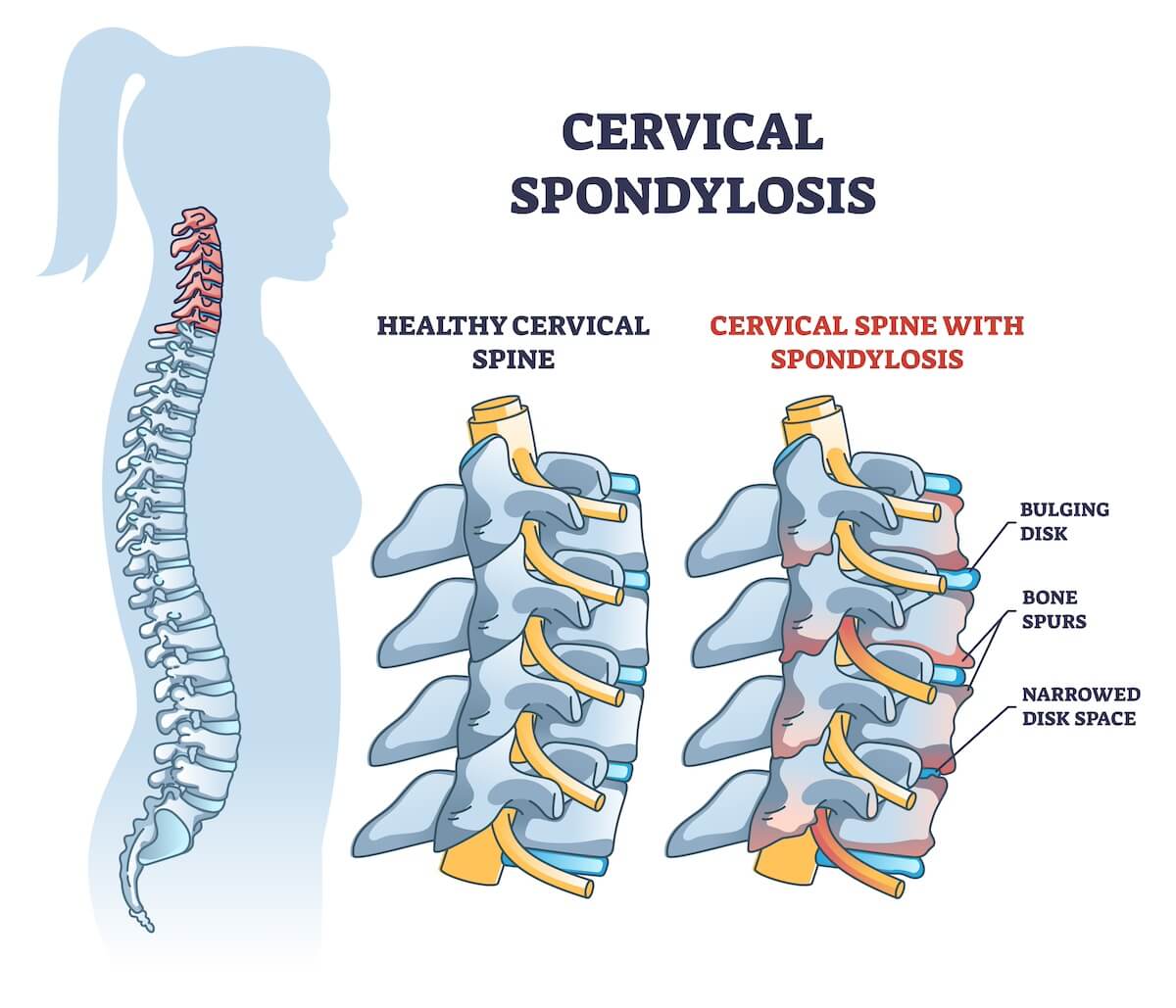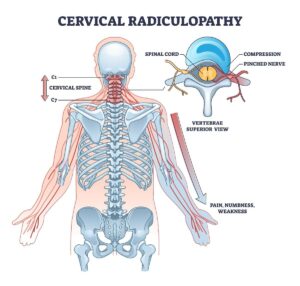Free download: Top 10 Natural & Easy Remedies for Joint Pain from Home. Learn these helpful remedies.
Estimated Reading Time: 7 minutes read
Cervical spondylosis, a common condition affecting the neck, often arises due to age-related changes in the spine. As we age, the discs between our vertebrae may start to wear down, leading to discomfort or pain in the neck area. But worry not, as specific exercises and care tips can significantly alleviate these symptoms, ensuring a better quality of life. This article aims to shed light on simple yet effective exercises that can help manage cervical spondylosis, making it less of a burden for those affected.
Understanding the root causes and recognizing symptoms early can be crucial in managing cervical spondylosis effectively. Before diving into the exercises, let’s explore what typically leads to this condition and the symptoms to watch out for. This knowledge will not only help address the issue but also prevent its progression.
Table of Contents
Causes of Cervical Spondylosis
- Age-related Wear and Tear: The most common cause, as discs dehydrate and shrink over time.
- Previous Neck Injuries: Past accidents or injuries can precipitate the condition.
- Repetitive Neck Motions: Jobs or activities requiring constant neck movement can accelerate wear.
- Poor Posture: Long periods in poor posture, especially related to desk jobs, can contribute.
- Genetic Factors: A family history of cervical spondylosis might increase risk.
- Smoking: Linked to increased neck pain and degeneration.
Symptoms to Look Out For
- Neck Pain and Stiffness: Often the first sign, possibly worsening over time.
- Headaches: Particularly at the back of the head.
- Numbness or Weakness: In arms, hands, or fingers, indicating nerve involvement.
- Tingling Sensations: In the affected areas.
- Reduced Flexibility: Difficulty in moving the neck or head.
- Balance Problems: Difficulty in coordination or walking.
Essential Exercises for Relief
Before diving into the specific exercises, it’s crucial to understand that these activities aim to strengthen the neck muscles, improve flexibility, and reduce pain. Regular practice can lead to significant improvements. Ensure you perform these exercises gently and stop if you experience any pain.
A: Soft Tissue Mobilization
Soft tissue mobilization is a helpful way to ease the pain that comes with cervical spondylosis. This method focuses on relaxing the muscles, ligaments, and fascia around your neck. You can use simple things like a lacrosse ball or a foam roller to gently press on tight spots, known as trigger points. Doing this helps to loosen up the knots, increase blood flow, and help the area heal.
While doing soft tissue mobilization can reduce pain and make it easier to move, it’s important to do it gently. Pay attention to what your body tells you and don’t push too hard. Knowing how to do it right is key, so you might want to ask a professional for advice. Doing this regularly and carefully can really help, making you feel better and supporting the health of your neck.
B: Stretches for Flexibility and Strength
1. Levator Scapulae Stretch
- Begin by sitting upright in a chair.
- Depending on the side of pain, place that hand on the seat. For instance, if your right side aches, use the right hand.
- With your opposite hand, gently grasp the side of your head.
- Apply a gentle pressure to guide your gaze toward the opposite armpit.
- Hold for 30 seconds and repeat three times.

2. Pec Stretch

- Standing in front of your doorway, raise your arms up to shoulder height like a goalpost. The elbows will be bent with the palms facing forward.
- Keeping this position, rest the arms against your doorway.
- Slowly lean forward into a gentle stretch and hold for at least 30 seconds.
- Repeat this stretch for a total of 3 times.
C: Isometric Neck Strengthening
- Start by sitting up tall and placing your hands on your forehead.
- Gently press your hands into your forehead and your forehead into your hands to match the pressure. From the outside, it’ll look like you’re not doing anything, but you’ll feel your muscles activate! Hold for 5 seconds x 10
- Then, place your hands on the back of your head. Gently press your hands into your head and your head into your hands to match the pressure. From the outside, it’ll look like you’re not doing anything, but you’ll feel your muscles activate! Hold for 5 seconds x 10
- Next, place one hand on the side of your head. Gently press your hand into your head and your head into your hand to match the pressure. From the outside, it’ll look like you’re not doing anything, but you’ll feel your muscles activate! Hold for 5 seconds x 10.
- Finally, place your other hand on the other side of your head. Gently press your hand into your head and your head into your hand to match the pressure. From the outside, it’ll look like you’re not doing anything, but you’ll feel your muscles activate! Hold for 5 seconds x 10.
D: Strengthening Exercises
1. Chin Tucks
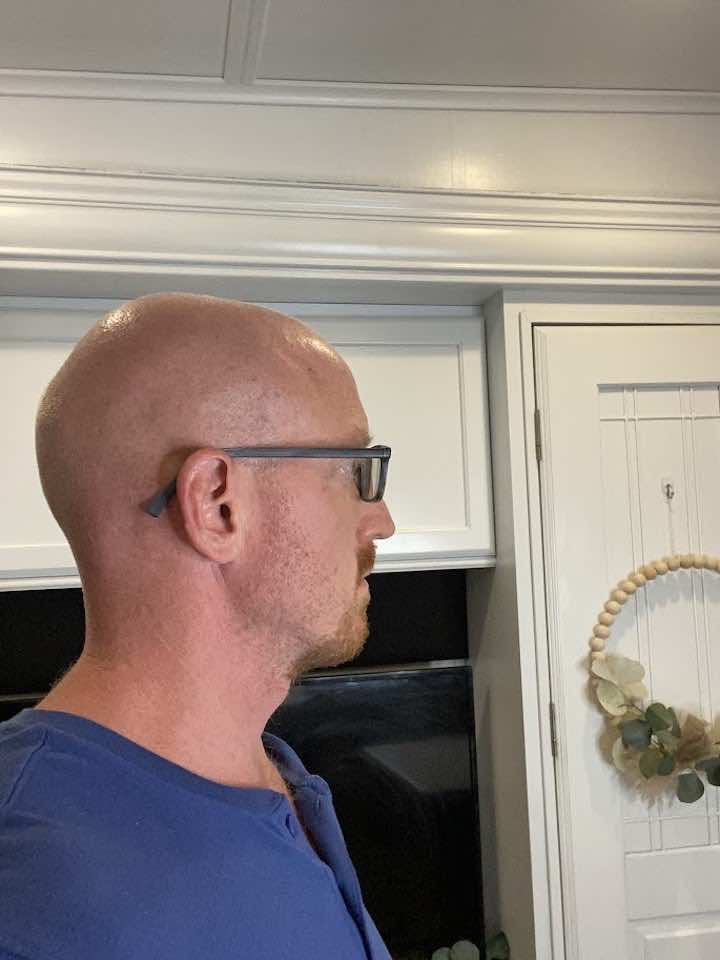
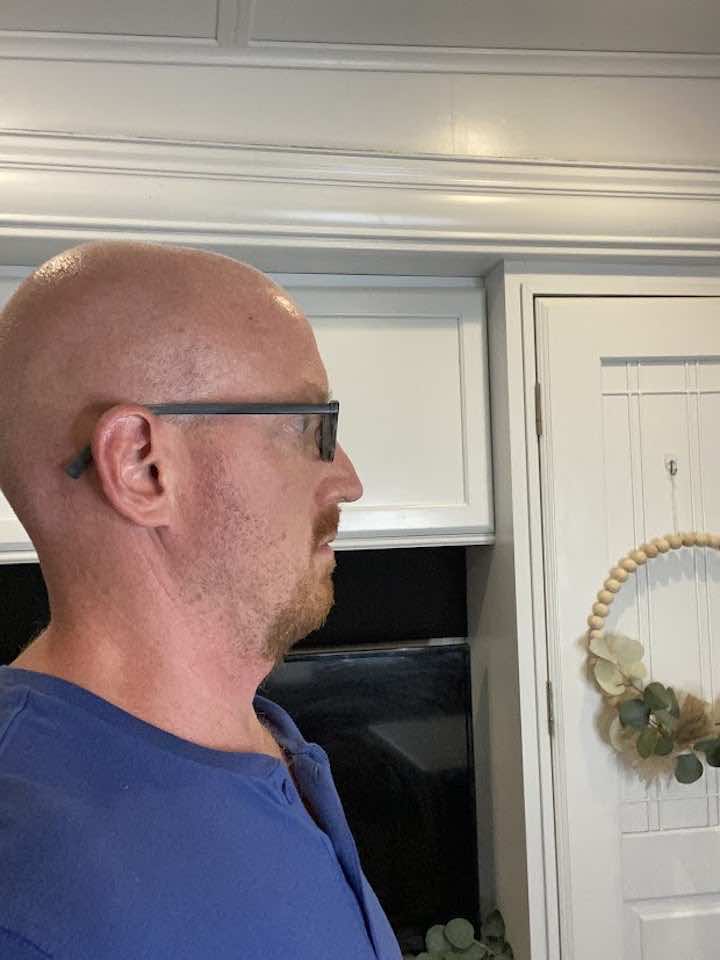
- You can perform a chin tuck laying on your back or sitting or standing.
- Gently tuck the chin directly back as if trying to make a double chin. Avoid nodding your head.
- Hold this position for 2 seconds, then slowly relax your muscles.
- Repeat 10 repetitions.
2. Scapular Retraction
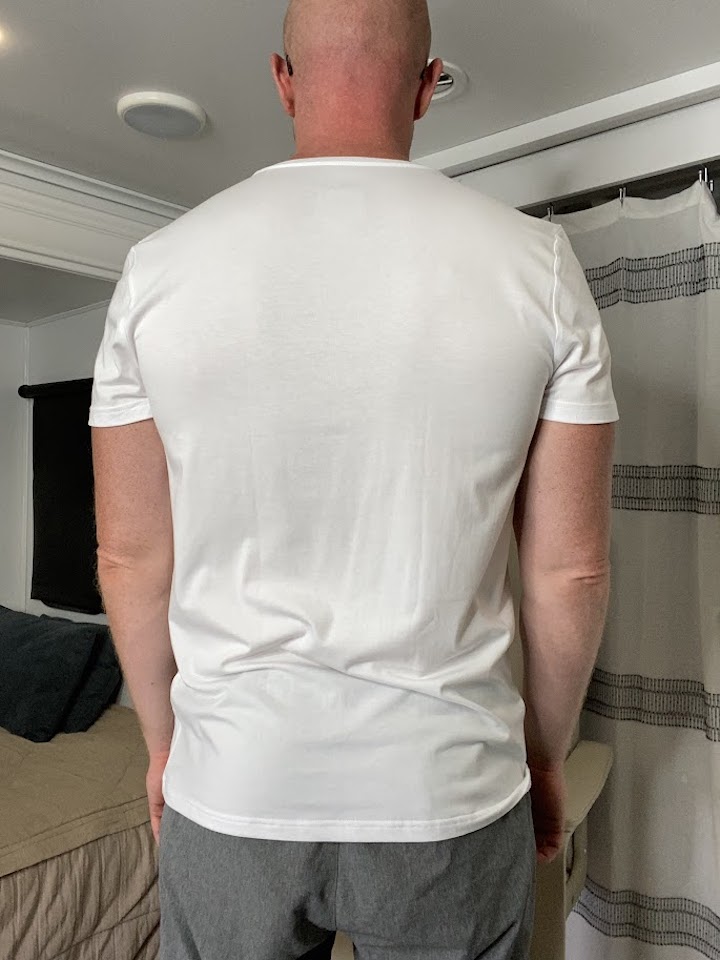
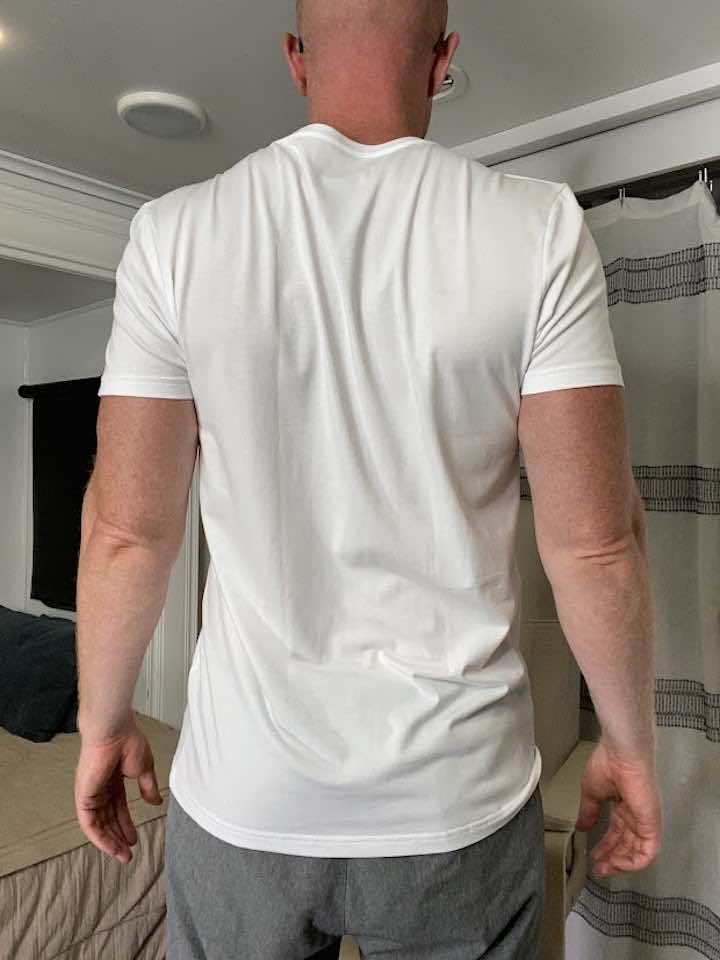
- In a sitting or standing position, try to sit as straight as possible. Aim to position the head in a neutral position as possible.
- Gently pull the shoulders back and squeeze the shoulder blades together.
- Hold for 5 seconds, then relax.
- Repeat 10 repetitions for 3 sets.
3. Rows with Resistance Band
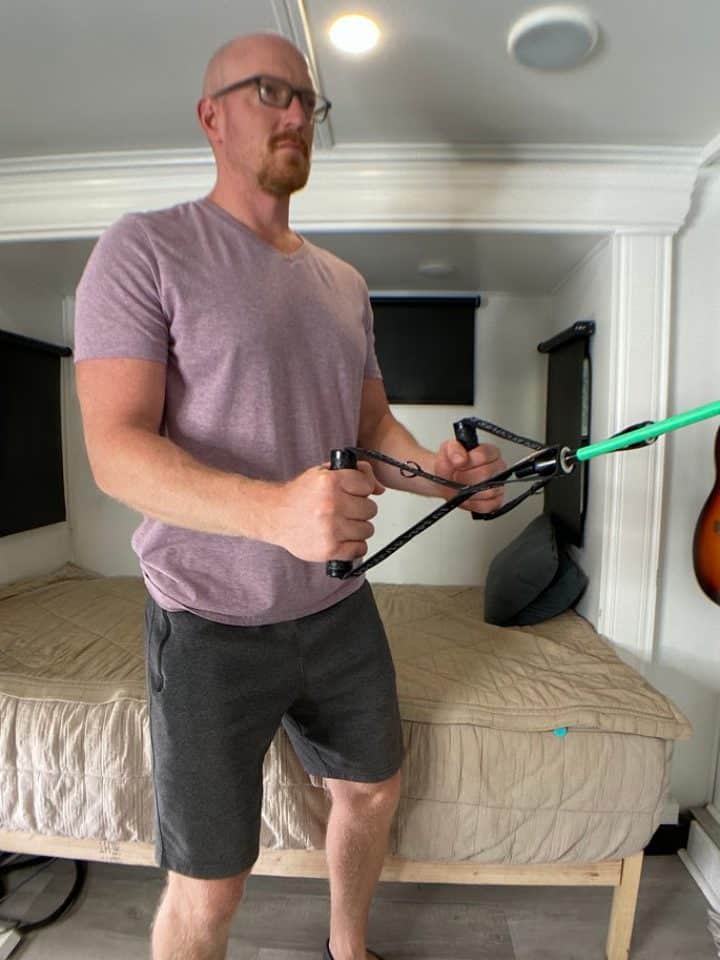
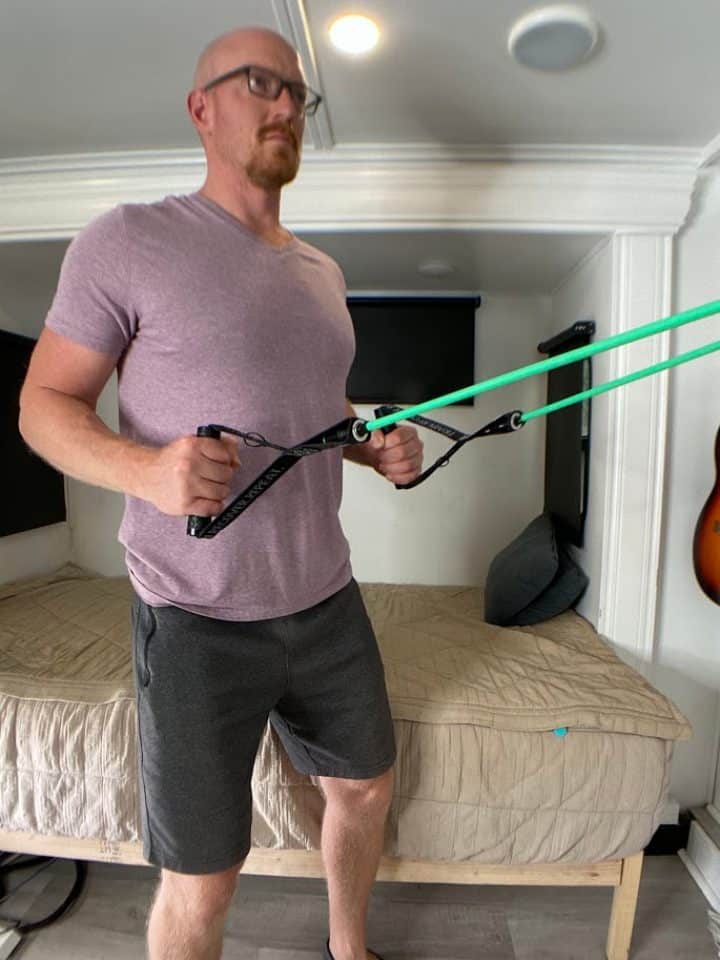
- Hold on to the ends of a resistance band (light, medium or heavy), which you can attach to a door knob.
- Begin with the arms elevated in front of you to shoulder height and the palms facing each other.
- Step back far enough that the resistance bend has a little tension.
- Pull back on the band by bending the elbows and swinging the arms back next to you. Make sure to squeeze the shoulder blades together.
- Hold for 2 seconds, then return to your starting position.
- Repeat 10 repetitions for 3 sets.
E: Gentle Neck Range of Motion Exercises
1: Flexion
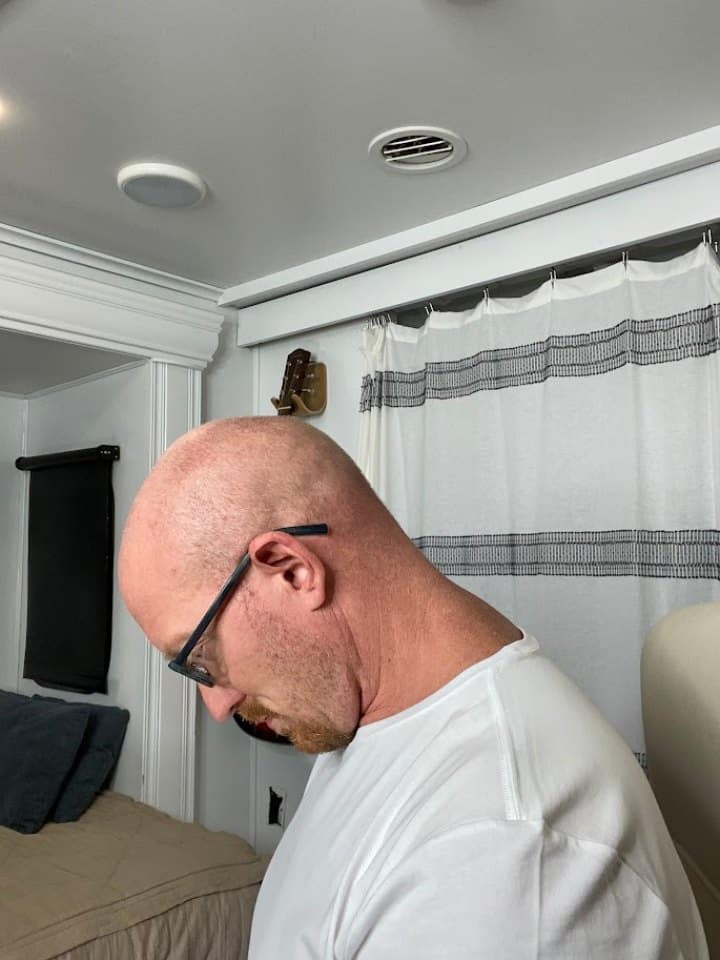
- Bend the head forward until you feel a comfortable stretch on the back of the neck.
- Hold for 2 seconds, then return to your starting position.
- Repeat 5-10 repetitions for 2 sets.
2: Extension
- Bend the head backward. Do not push into pain.
- Hold for 2 seconds, then return to your starting position.
- Repeat 5-10 repetitions for 2 sets.
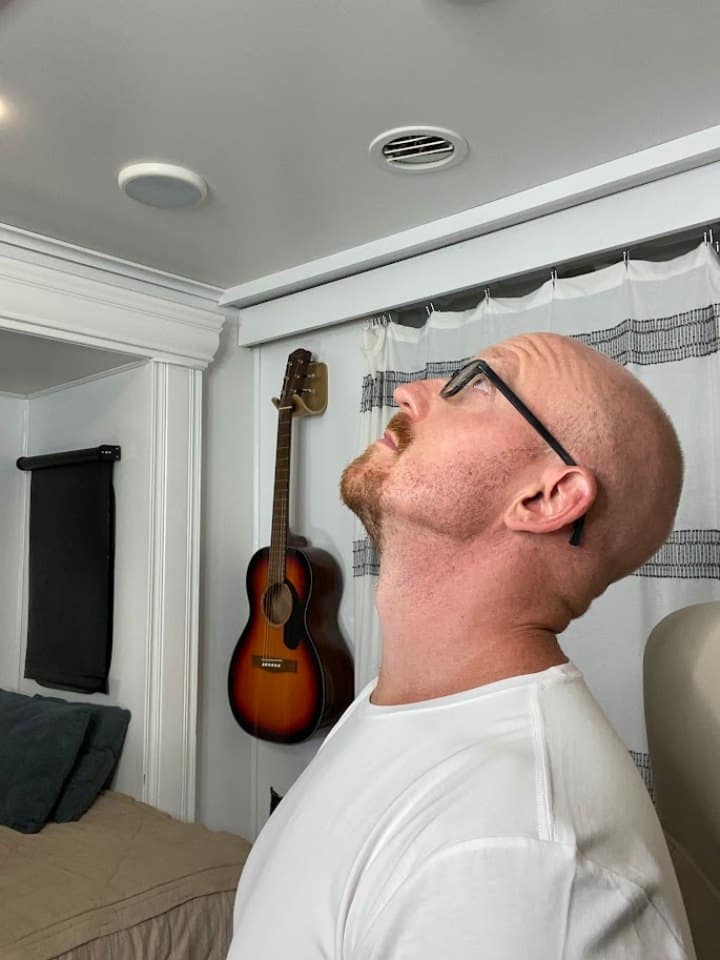
3: Rotation


- Turn the head one side at a time, practicing on both the left and right sides.
- Make sure you don’t force the motion.
- Key in on turning away from the side the cervical dystonia is naturally pulling you into.
- Hold for 2 seconds, then return to your starting position.
- Repeat 5-10 repetitions for 2 sets.
Care Tips for Cervical Spondylosis
To complement the exercises, adopting a few care tips can enhance your management strategy for cervical spondylosis:
- Maintain good posture, especially if your job involves long hours of sitting.
- Take regular breaks to stretch and move if you work at a desk.
- Use a supportive pillow and mattress to keep your spine aligned while sleeping.
- Manage stress as it can tense up the neck muscles, worsening the pain.
- Stay hydrated to keep the discs in your spine nourished and prevent further degeneration.
Conclusion
Cervical spondylosis can be a challenging condition, but with the right approach, its symptoms can be managed effectively. Incorporating these exercises into your daily routine can help alleviate pain, improve flexibility, and strengthen the muscles around your neck.
Remember, consistency is key, and it’s always best to consult with a healthcare professional before starting any new exercise regimen. By taking care of your cervical spine through exercise and proper care, you can maintain your neck health and continue to enjoy an active, pain-free life.


